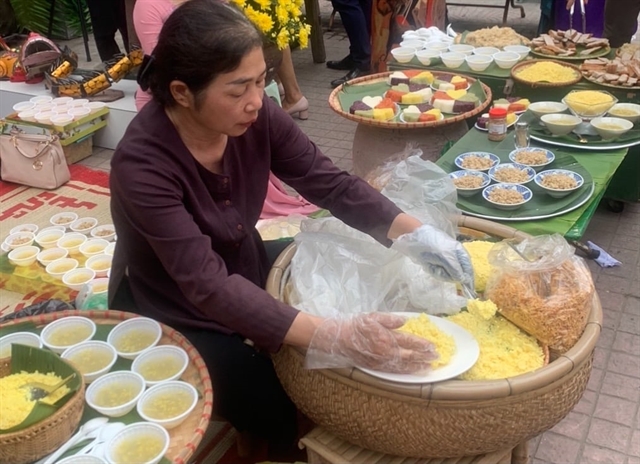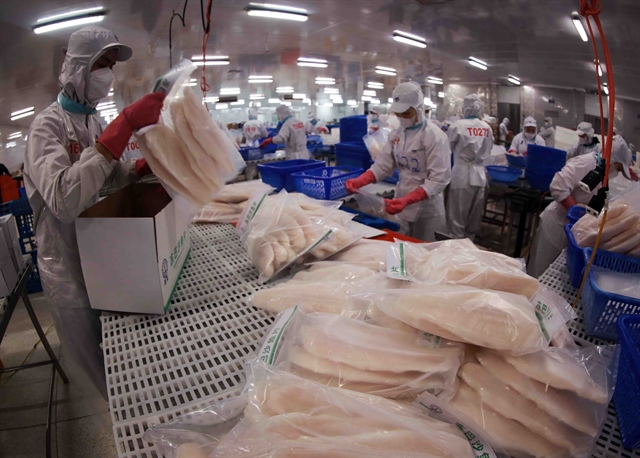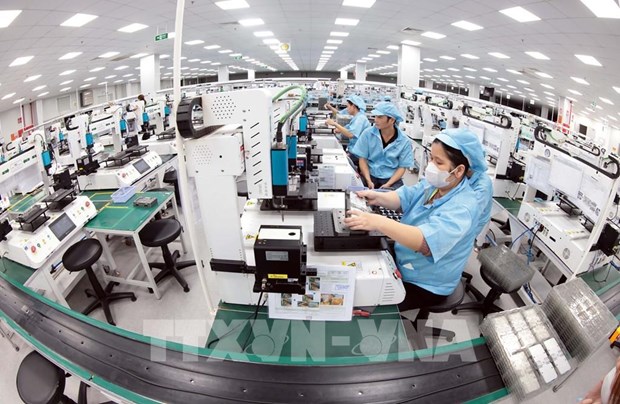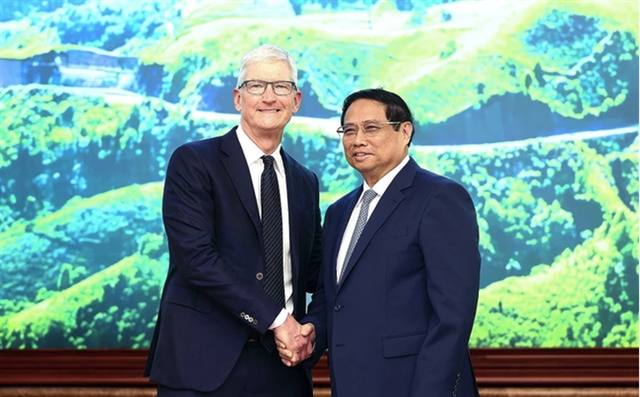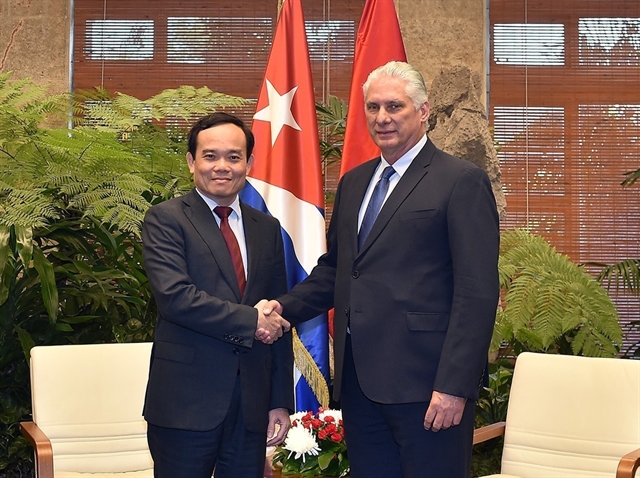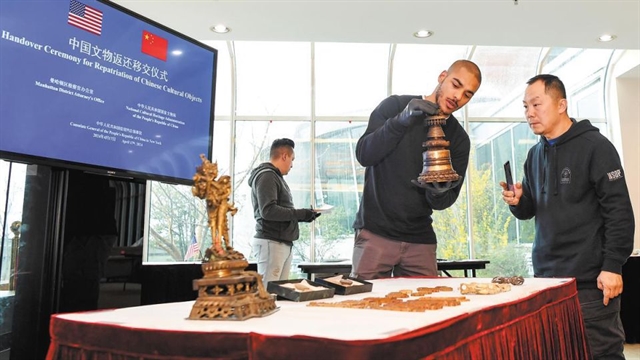 Life & Style
Life & Style

Thousands of people are flocking to the Yên Tử Spring Festival, the largest annual festival in northern Việt Nam, which began Sunday in Uông Bí City, Quảng Ninh Province.
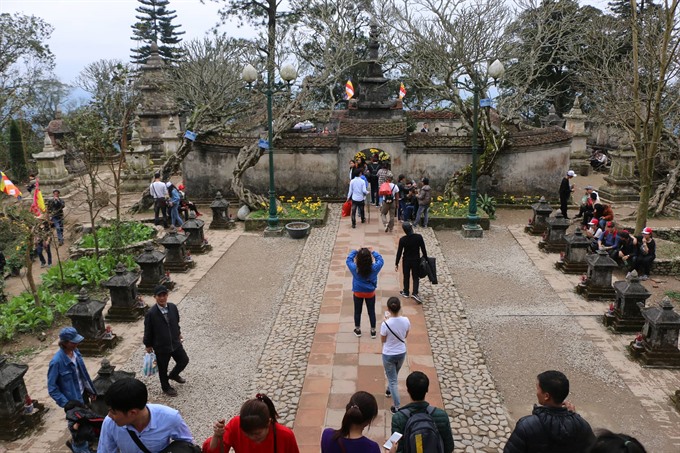 |
| Crowds: There were 50,000 visitors to Yên Tử on the first day of the 2018 Yên Tử Festival, the tenth day of lunar new year. — VNS Photo Đoàn Tùng |
QUẢNG NINH — Thousands of people are flocking to the Yên Tử Spring Festival, the largest annual festival in northern Việt Nam, which began Sunday in Uông Bí City, Quảng Ninh Province.
The festival, considered one of the largest pilgrimage events in Việt Nam, opened with a water procession ritual held by hundreds of Buddhist practitioners, art performances, lion and dragon dances, as well as a ceremony to pray for peace and prosperity for the country and its people.
This year, the festival is being held in the newly launched Trúc Lâm Cultural Centre, covering more than 15ha. The festival is the first in a series of cultural events in celebration of the 2018 Hạ Long-Quảng Ninh National Tourism Year in Quảng Ninh Province.
Đoàn Thị Xuân, 74, from Bắc Sơn, Uông Bí City, noted, “I go to Yên Tử Festival almost every year. This is an important tradition of pilgrimage for locals and an opportunity for us to commemorate the great Buddhist King Trần Nhân Tông and pray for good things in the new year. At this age, I just wish for health for myself and my whole family.”
Lý Kim Anh, a 28-year-old banker from HCM City who visited the Yên Tử Festival for the first time, said, “My colleagues and I made a one-week trip to the north to mostly visit pagodas and temples here. Making pilgrimages in the new year gives me peace of mind.”
“Visiting the Đồng (Bronze) Pagoda on top of Yên Tử is also an interesting experience, though it is a bit tiring,” Kim Anh added.
The walkway from the foot to the top of Yên Tử mountain is about 6km. It takes some six hours to reach the top, weaving through the wild forest. A cable car has been available for visitors, yet many complained they still had to climb quite far to reach the cable car station.
About 50,000 people were expected to visit Yên Tử on Sunday, along with 230,000 people expected to visit Yên Tử during the first ten days of the new year, according to the Yên Tử Relic Management Board.
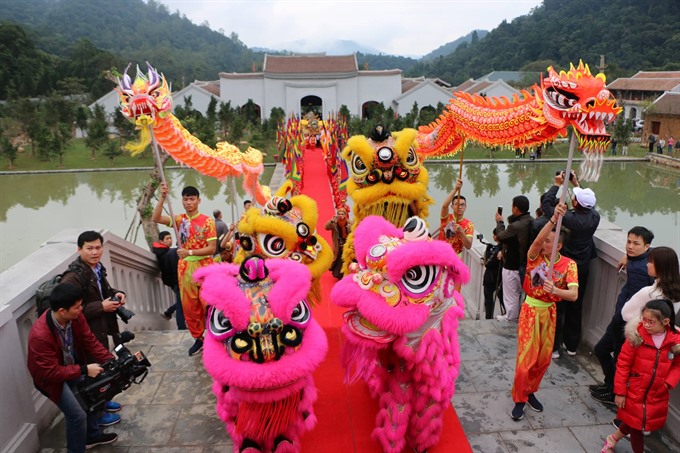 |
| Fluid: The water procession was held in the Trúc Lâm Cultural Centre on Sunday morning. — VNS Photo Đoàn Tùng |
Major sites on Yên Tử Mountain, including the Đồng Pagoda, Hoa Vân Pagoda, Một Mái Pagoda, and Tower Garden, Statue of Trần Nhân Tông, were crowded with local worshippers.
At about 11am on Sunday, a very large number of people came to Đồng Pagoda, on top of the mountain, both by cable car and on foot, which led to serious congestion on the path to the pagoda.
“It tooks more than three hours to finish the 500-metre climbing route from the cable car station to Đồng Pagoda,” said 60-year-old Trần Văn Dương from the northern province of Hải Dương.
Yên Tử Mountain, located about 50km from Hạ Long City, is surrounded with scenic landscape and ancient pagodas. This sacred mountain is where King Trần Nhân Tông (1258-1308) abdicated his throne and founded Trúc Lâm Zen. It is considered the capital of Vietnamese Buddhism.
To date, Yên Tử remains a great treasure of Buddhist culture for the Vietnamese people, dating back 700 years, with dozens of pagodas and hundreds of temples, as well as thousands of ancient relics which contain spiritual values of Trúc Lâm Zen. The pagoda was recognised as a Special National Relic Site in September 2012.
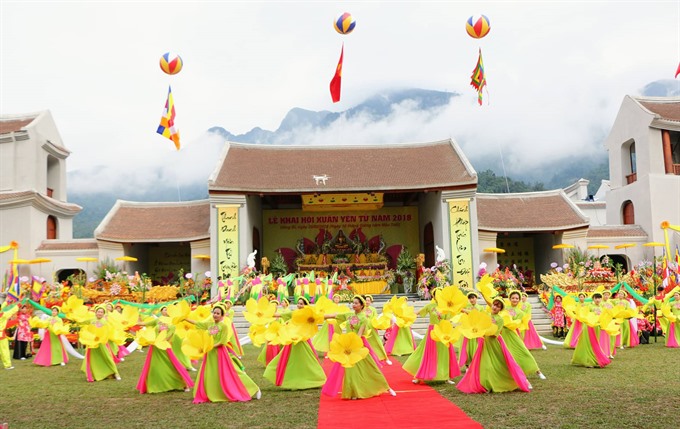 |
| Behold: The 2018 Yên Tử Festival kicked off on Sunday with an art performance. — VNS Photo Đoàn Tùng |
New structures featured
The locality has built new structures to welcome festival goers. Nương Village, located in the cultural centre, is one of them.
The site resembles an ancient village in the foot of Yên Tử Mountain during the Trần Dynasty. About 50 houses, surrounded by two streets, have been completed. There is also an area for exhibiting the culture of the Dao ethnic minority people, as well as agricultural tools used by the Vietnamese people in the village.
A communal house stands in the centre of the village where different types of traditional folk art are performed, such as chèo (traditional operetta), xẩm (blind buskers’ singing) and quan họ (folk love duet singing).
Nương Village displays the features of an ancient village from the Trần Dynasty with buildings constructed of wood, terracotta and bricks. Nearby each house grows fruit gardens, containing pomelo, tamarind, mango, as well as betal trees.
A museum about Buddhist King Trần Nhân Tông is located in the cultural centre, providing insights about the king through three main stages in his life – when he was born and grew up; when he was a king and led the country against the invasion of the Mongols; and when he left the royal palace to lead an ascetic religious life and founded the Trúc Lâm Zen sec.
The festival will continue until the third lunar month. — VNS


